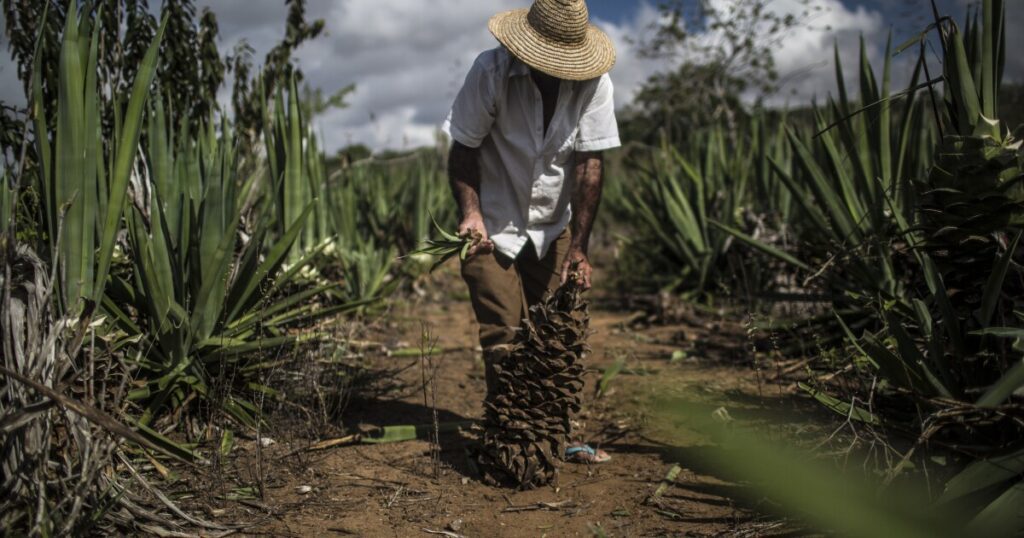The role of technology in the growth of microinsurance

Globally, the microinsurance sector is undergoing a significant transformation, driven by innovative technologies that are making insurance more accessible, efficient and affordable for underserved populations. These advancements are not only streamlining operations and making distribution of microinsurance more cost-effective, but more importantly lowering the barriers to entry for lower income populations to access the financial tools that can support resilience.
Innovative educational tools for financial literacy
While living up to the promise to pay valid claims quickly and efficiently is a cornerstone of the growth and trust in insurance, financial literacy is also a significant barrier to the adoption of microinsurance services. Traditional literacy efforts are being supplemented by innovative digital tools to educate hard-to-reach populations. In the Pacific Islands, Rural Inclusion, a tech-focused social enterprise, partnered with Solutions Studio and the United Nations Capital Development Fund (UNCDF) to improve financial literacy and disaster risk insurance understanding through a digital education platform.
This initiative uses video-based interactive training modules to build financial knowledge among rural communities. By leveraging local and international partnerships, the project demonstrates how digital platforms can be used to improve literacy at scale. This approach is crucial for increasing the adoption of insurance products and enhancing the resilience of underserved communities against climate risks.
In Latin America, meanwhile, Fundación Profin, a Bolivian non-profit organization focusing on financial inclusion, developed Edufina, an educational application aimed at enhancing financial literacy among users. This app supports the delivery of financial education through modules that cover essential topics including insurance and is designed to facilitate learning in an interactive and practical way through games, videos and quizzes.
Enhancing product reach with index insurance
Index insurance, particularly for agriculture, has been adapted to cover a variety of risks and has shown promising results in different regions. IBISA Network and Blue Marble Microinsurance are notable examples. IBISA Network launched a heat insurance product that covers economic losses due to heat stress on animals, while Blue Marble piloted a similar product in India, targeting women through a partnership with the Self-Employed Women’s Association (SEWA).
Blue Marble’s innovation lies in developing a forecast-based heat stress product, enabling payouts to be made before an adverse event occurs, rather than after. This proactive approach helps mitigate risks more effectively and ensures timely financial support for the insured, highlighting how tailored insurance products can address specific vulnerabilities and improve financial inclusion for women.
Ibisa and Blue Marble are joined by organizations like the Microinsurance Catastrophic Risk Organisation (MiCRO) in Latin America, Weather Risk Management Services (WRMS) in Asia, and Lorica Conseil in Africa, to use satellite imagery to monitor climate-related hazards such as droughts and floods. This advanced technology enables the automatic disbursement of payments to low-income communities who are enrolled in these insurance programs, providing timely financial assistance in response to specific environmental triggers.
Telemedicine and digital health solutions
Health microinsurance is another area where technology is making significant strides. BIMA, a global leader in digital health microinsurance, uses telemedicine to offer doctor consultations to customers in Ghana. This service bridges the gap to universal health coverage by providing accessible healthcare to underserved populations.
Notably, women constitute the majority of both beneficiaries and providers of these consultations, showcasing how digital health solutions can address gender-specific needs and improve overall health outcomes.
AXA Emerging Customers also recognized the critical role telemedicine can play in adding value to low-income communities, who often lack easy access to healthcare services. Increasingly, the products they offer to these vulnerable groups include options for receiving basic healthcare support electronically, thus enhancing accessibility and convenience to preventive care.
Partnerships and distribution innovations
Coverage is one thing, but effective distribution channels are vital for reaching target populations in remote areas. VisionFund International, a microfinance institution, uses its extensive network to distribute microinsurance products, ensuring they meet local needs and are affordable. This model is supplemented by financial education efforts to increase awareness and understanding of insurance benefits.
In the Philippines, the partnership between Pioneer Insurance and CARD, a microfinance institution, exemplifies successful collaboration. Their joint efforts have reached over 23 million customers by prioritizing customer needs and leveraging existing technology platforms. This long-term commitment and alignment of values have resulted in substantial growth and sustainability.
As highlighted in the Microinsurance Network’s (MiN) Landscape Studies, microfinance institutions (MFIs) are pivotal distribution channels for microinsurance products, playing a crucial role in expanding insurance access to low-income communities. Recognizing the significant impact of insurance in safeguarding microfinance beneficiaries, the Pakistan Microfinance Network (PMN) and, more recently, the Nigerian Microfinance Platform (NMP), have spearheaded initiatives to integrate insurance as a fundamental component of the sector. These efforts include partnerships with various stakeholders to ensure comprehensive coverage for the clients of their respective members.
Pioneering change through AI and blockchain
One of the most compelling developments in microinsurance is the use of technology to expedite claims processing. Automated processes facilitated by technologies like blockchain, artificial intelligence (AI), and smart platforms are revolutionizing how claims are assessed and paid. AI, in particular, is playing a crucial role in enhancing the efficiency and speed of claims management.
For instance, ACRE Africa (Agriculture and Climate Risk Enterprise), an insurance intermediary serving smallholder farmers, leverages AI and blockchain technology to lower costs and improve service delivery. Farmers use smartphones to take photos of their crops at various stages, from planting to harvesting.
These images are analyzed by AI algorithms to assess crop damage and trigger claims if a loss is detected. This AI-driven approach eliminates the need for costly on-site inspections, making insurance more viable for smallholder farmers. Additionally, blockchain technology ensures immediate payouts when predefined weather parameters are met, further reducing administrative costs and enhancing the reliability of the claims process.
Etherisc, one of the pioneers of using blockchain to simplify inclusive insurance solutions, partnered with other insurance providers to create the Lemonade Crypto Climate Coalition and protect Kenyan farmers by issuing smart contracts, which ensure automatic and quick payouts without the need of filing claims.
Technology is driving significant advances
The integration of technology into microinsurance is driving significant advancements in the sector. From AI-powered claims processing and blockchain-enabled payouts to digital education platforms and innovative insurance products, technology is enhancing the efficiency, reach, and affordability of microinsurance. These innovations are crucial for closing the protection gap and building resilience among underserved populations, demonstrating the transformative potential of technology in the microinsurance industry.
Equally important is the role of knowledge sharing and exchange between microinsurance providers, regulators, governments and beneficiaries. This collaborative approach ensures that successful strategies and technologies are disseminated widely, reducing the need to reinvent the wheel with each new innovation. By learning from one another as well as its failures, and building on proven solutions, the microinsurance industry can accelerate its development, making insurance more accessible and effective for those who need it most. This collective effort will be key to sustaining growth and achieving the full potential of microinsurance as a tool for financial inclusion and social protection.
See more:US farmers want to adapt to climate change, but crop insurance won’t let themNon-traditional insurance options that meet evolving customer needs




